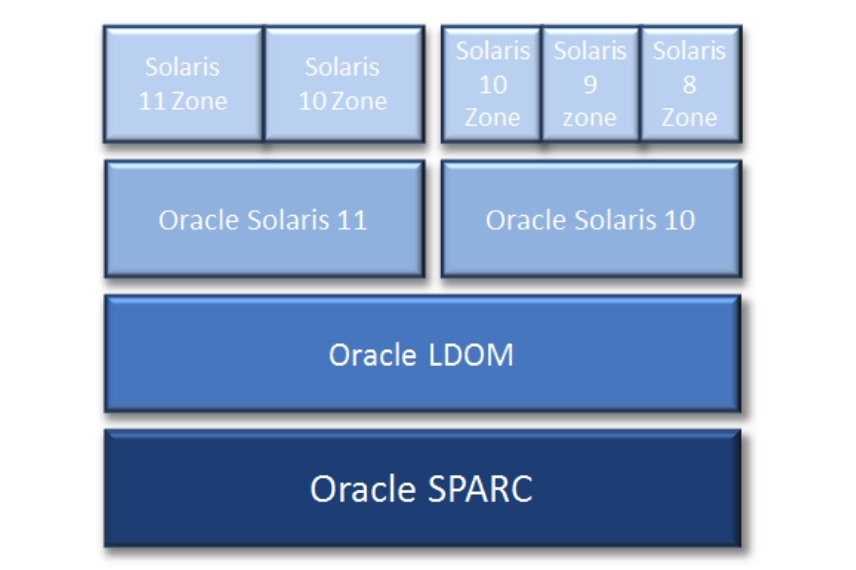Oracle-OVM
Innehåll
Oracle OVM
There are several types of virtualisation for Solaris which are covered by this generic name OVM (Oracle Virtual Machine)
- Hypervisor
Oracle LDOMs
- OS
Solaris Zones/Containers either a Whole, Sparse or Kernel version
General Information
OVM is included in Solaris 11 and Solaris 10 It does not require a RTU licence although a Support contract for each running guest domain will be required. The advantages for OVM are:
- provision bare metal hypervisors
- provision virtual machines
- Hard Partitioning. Oracles licence structure for Mulit-core & Multi-threaded environments. To avoid paying for all the cores in the platform hard partitioning is configured to licence just the cores that are used in the virtual instance.
- This is enforced by using CPU whole-core configurations.
- A CPU whole-core configuration has domains that are allocated CPU whole cores instead of individual CPU threads.
- When binding a domain in a whole-core configuration, the system provisions the specified number of CPU cores and all its CPU threads to the domain.
- Using a CPU whole-core configuration limits the number of CPU cores that can be dynamically assigned to a bound or active domain.
NB! By default, a domain is configured to use CPU threads.
- migrate virtual machines to different hosts either "Warm" or "Cold" migration.
- Guest domains can run Solaris 11 or Solaris 10. Zones can be then configured in the guest domain.
NB! this will though limit that guest domain to cold migration only
- ZFS on host domain allows for easy patch and backup/recovery policy.
- NFS volumes or SAN disk/iSCSI with cluster file-system to facilitate "Warm" migration.
For best practice migrtation the architecture requires the following components:
- A shared filesystem for hosting virtual machines to allow for node migration.
- Cold Migration involves stopping, manual migration and start of LDOM.
- Warm Migration allows for automatic migration with minimal downtime for the migration.
Having this shared file system (which we recommend be on a SAN, iSCSI (med Cluster FS) or GPFS allows us migrate nodes from).
- Solaris 10 (11/13) & 11 LDOMs
- Solaris 8,9 & 10 zones
- Running an < init 5 > on a primary domain with running guest domains will reboot the primary domain i.e it will act as an < init 6 >
OVM administration
- List all nodes running on a Hyerpvisor OVM-host
# ldm ls NAME STATE FLAGS CONS VCPU MEMORY UTIL NORM UPTIME primary active -n-cv- UART 2 16G 1.5% 1.5% 84d 34m guest-dom active -n---- 5001 16 28G 0.4% 0.4% 84d 29m
- Start/Stop a guest domain
ldm start <guest-domain> ldm stop <guest-domain>
Useful commands for instances on Hypervisor OVM host
ldm <- display help for ldm ldm list-services <-- display assigned disk, net, cpu etc... ldm list-constraints <-- display cpu cores, max-cores etc... ldm list-variable <domain> <-- display boot params for domain ldm list -o resmgmt <domain> <-- determine if domain configured with whole-cores for hard partitioning.
Useful commands for instances on OS OVM-host
zoneadm list -icv <-- View all of zones configured on the host zoneadm -z <zonename> boot/reboot/halt zonecfg -z <zonename> info <--display zones configuration zonecfg -z <zonename> export <-- export zone configuration to file zlogin <zonename> <--login to a zone zlogin -C <zonename> <-- login to zone's console
